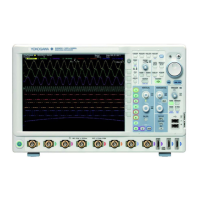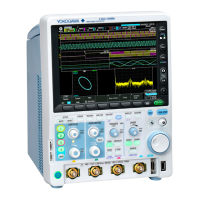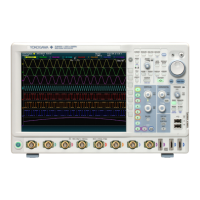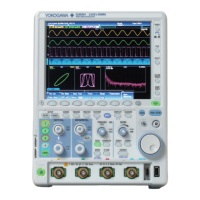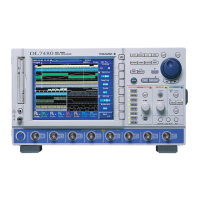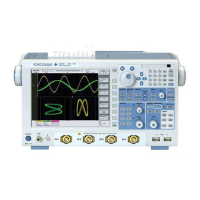6-2
IM 710105-17E
Overview of Registers and Queues
Name Function Write Read
Status byte −
−
Serial polling
(RQS)
,
*STB? (MSS)
Service request enable
register
Status byte mask
*SRE *SRE?
Standard event register Indicates device status
changes
− *ESR?
Standard event enable
register
Standard event register
mask
*ESE *ESE?
Extended event register Indicates device status
changes
− STATus:EESR?
Extended event enable
register
Extended event register
mask
STATus:EESE STATus:EESE?
Condition register Current device status
− STATus:CONDition?
Transition filter Conditions that change the
extended event register
STATus:FILTer<x> STATus:FILTer<x>?
Output queue Stores response messages
for queries
Query commands
Error queue Stores error numbers and
messages
− STATus:ERRor?
Registers and Queues That Affect the Status Byte
The following registers affect the status byte bits.
Standard event register Sets bit 5 (ESB) of the status byte to 1 or 0.
Output queue Sets bit 4 (MAV) of the status byte to 1 or 0.
Extended event register Sets bit 3 (EES) of the status byte to 1 or 0.
Error queue Sets bit 2 (EAV) of the statys byte to 1 or 0.
Enable Registers
The following registers are used to mask a bit so that the bit will not affect the status byte even
when it is set to 1.
Service request enable register Masks bits of the status byte.
Standard event enable register Masks bits in the standard event register.
Extended event enable register Masks bits in the extended event register.
Reading and Writing to Registers
For example, you can use the
*ESE
command to set the standard event enable register bits to ones
and zeros. You can use the
*ESE?
command to query whether the standard event enable register
bits are ones or zeros. For details on commands, see chapter 5.
6.1 About Status Reports

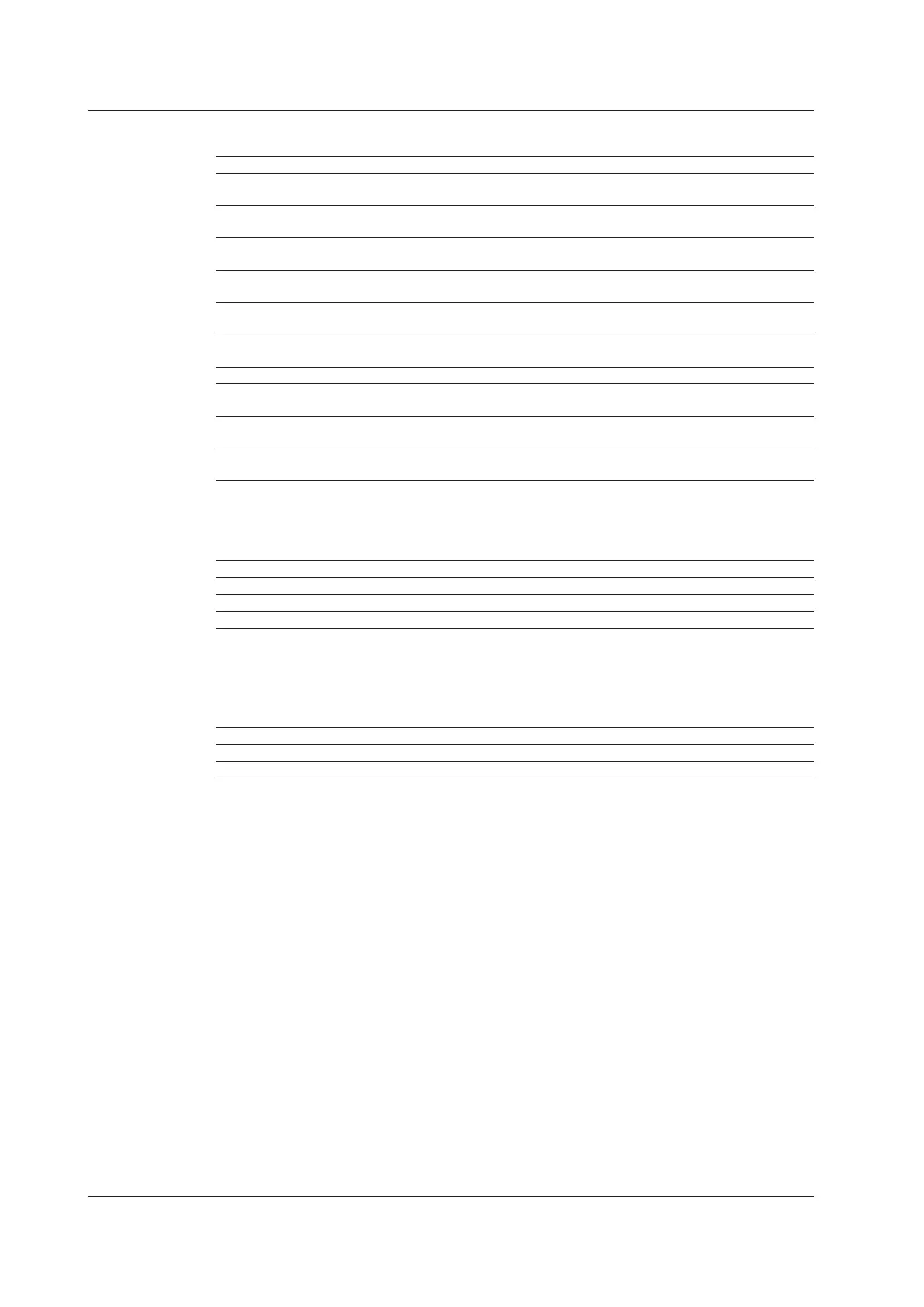